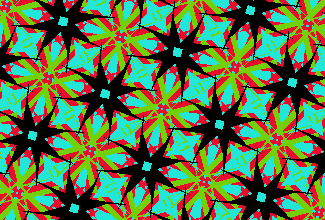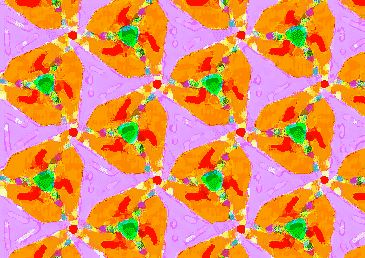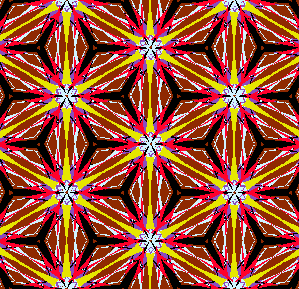Pattern: Omnipresent Reality
"Life makes patterns out of patternless disorder, but I suggest that life itself was made by a pattern and that this design is inherent in cosmic forces to which life was, and still is, exposed."
--Lyall Watson
 allahallah
allahallah allahallah
allahallah
allahallah
Our brains function as pattern recognizing devices. The ability to perceive and recognize pattern forms the basis of all human decision making, and the ability to infer predictions from pattern is what gives human intelligence its evolutionary edge. Pattern can be defined as any regularity that can be recognized by the brain. Our brains are built to focus on pattern, and so we are sensitized to recognizing the patterns in nature all around us. There are
patterns in weather, in life-cycles, and in the results of certain actions. For example, early hunters recognized the patterns of animal migration throughout the year, allowing them to follow herds and hunt in an effective, rather than random, way.
allahallah
Because pattern is so important to humans, people imitate the patterns seen in nature, and form their own systems of predictable pattern. For example, the patterns present in language, thought, and social behavior allow humans to interact and communicate. The patterns of mathematics mimic the patterns in nature, often with a surprising accuracy. Our knowledge of mathematical patterns allows us to develop complex scientific theories about phenomena beyond our immediate experience. Simulations of the brain, such as computers, are efficient because they reduce all information to easily recognizable patterns: repetitions of 1 and 0.
allahallah
Click here to experiment with your own geometrical patterns in an interactive applet, or click
here to continue your tour of symmetry and geometry in Islamic art.
Pattern
Symmetric Pattern
Symmetry in Our World
Producing Symmetry
Types of Symmetry
Symmetry and Islamic Art
Home
 allahallah
allahallah allahallah
allahallah
 allahallah
allahallah allahallah
allahallah